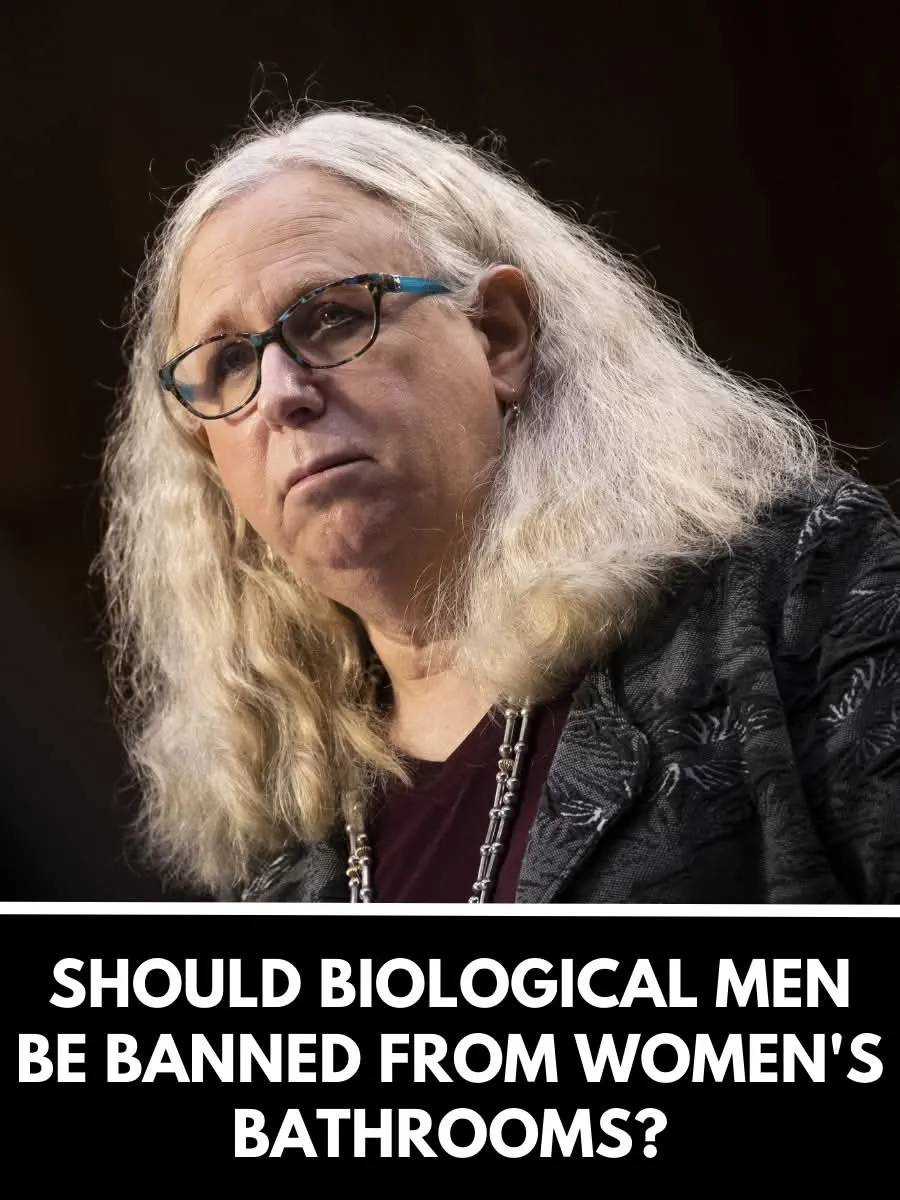
One of the most polarizing cultural debates in America today centers around a deceptively simple question: Who should be allowed to use which public bathroom? This question has become the battleground for a broader clash between civil rights, safety concerns, and definitions of gender and identity in modern society.
A recent viral image with the caption “Should biological men be banned from women’s bathrooms?” reignited this debate across social media, news platforms, and political forums. The phrasing itself has sparked criticism and support alike—highlighting just how emotionally and ideologically charged this issue has become.
Understanding the Terminology
To fully grasp the conversation, it’s essential to understand the language being used. The phrase “biological men” typically refers to individuals who were assigned male at birth. However, many such individuals identify as transgender women—meaning they live and identify as women.
Transgender advocates argue that gender identity should determine access to facilities like restrooms and locker rooms, not sex assigned at birth. Critics, on the other hand, often focus on biological distinctions and safety implications, advocating for access based on one’s sex at birth.
This fundamental divide in how people define gender lies at the heart of the conflict.
The Case for Transgender Bathroom Access
Supporters of inclusive bathroom policies argue that transgender individuals should be allowed to use restrooms that align with their gender identity for several key reasons:
Civil Rights: Denying access to bathrooms is seen by many as a form of discrimination. Title IX, a federal civil rights law, has been interpreted in some court decisions to protect transgender students’ rights to access gender-aligned facilities.
Mental Health and Dignity: Transgender individuals often face harassment, isolation, and psychological harm when forced to use bathrooms that do not match their gender identity. Inclusion reduces distress and affirms their identity in public spaces.
Precedent and Data: In the many cities and states that already have inclusive policies, studies have shown no significant increase in safety incidents. Organizations like the American Psychological Association and the National Education Association have backed inclusive bathroom access based on gender identity.
Practicality and Safety for Trans People: Forcing transgender women to use men’s bathrooms may actually increase their risk of assault and humiliation. Transgender people already experience high levels of violence and harassment in public settings.
Concerns About Women’s Safety and Privacy
On the other side of the debate, opponents of inclusive bathroom policies express deep concerns about the safety, privacy, and comfort of cisgender women and girls:
Fear of Predators: The most frequently cited concern is the fear that men may exploit gender-inclusive policies to access women’s restrooms and commit crimes. Critics argue that bathroom policies could unintentionally create loopholes for abusers.
Biological Differences: Some argue that regardless of gender identity, biological males may still pose a physical threat, especially in vulnerable spaces like bathrooms and locker rooms. These arguments often reference concerns from parents or women’s rights groups.
Religious or Cultural Beliefs: A portion of opposition comes from communities with religious or cultural norms regarding modesty and gender separation. These groups often see inclusive policies as conflicting with their deeply held values.
Desire for Alternative Solutions: Many opponents support the idea of gender-neutral or single-use bathrooms as a compromise, allowing privacy and dignity for all parties without compromising safety concerns.
The Role of Law and Government
In the U.S., the debate has reached state legislatures, school boards, and even the Supreme Court. Some states, such as California and New York, have laws that affirm the rights of transgender individuals to use facilities aligned with their gender identity. Others, like Florida, Tennessee, and Texas, have passed or proposed legislation restricting bathroom access based on biological sex.
These laws have sparked lawsuits, protests, and federal challenges. In 2021, the Biden administration reaffirmed Title IX protections for transgender students. However, federal guidelines often clash with state-level restrictions, creating confusion for schools and public institutions.
Public Opinion: A Nation Divided
Polls show that Americans are deeply divided on the issue. While most support nondiscrimination protections for LGBTQ+ individuals in general, opinions shift when it comes to bathrooms. A 2023 Gallup poll found that:
51% of respondents favored requiring people to use bathrooms corresponding to their biological sex
44% supported access based on gender identity
5% were undecided
This split mirrors the broader political divide, with Democrats tending to support inclusive access, and Republicans generally opposing it.
The Media’s Role in Shaping the Narrative
The viral image asking whether “biological men” should be banned from women’s bathrooms is a clear example of how language and media framing can influence public opinion. Terms like “biological men” or “men in women’s spaces” are often used to provoke emotional reactions, while advocates use phrases like “trans women” and “gender-affirming access” to promote inclusion.
Social media platforms have become battlegrounds where these narratives are amplified, often stripped of nuance and loaded with inflammatory rhetoric.
Seeking Common Ground
Despite the polarization, there are efforts to find middle ground. Some schools and public places have begun offering gender-neutral restrooms that are private, single-use, and accessible to anyone, regardless of identity. These options have been well received by many who seek practical solutions that respect both inclusion and safety.
In workplaces and institutions, education and training about gender diversity and empathy are helping to shift cultural attitudes, particularly among younger generations who tend to be more accepting of nonbinary and transgender individuals.
Final Thoughts
The debate over bathroom access is not simply about restrooms—it reflects broader tensions over identity, privacy, safety, and what it means to coexist in a diverse society.
Framing transgender individuals as threats to women’s safety is both misleading and harmful to a vulnerable population. At the same time, concerns from women about privacy and safety are real and deserve respectful engagement, not dismissal.
As the conversation continues, America must decide whether it wants to build policy around fear or understanding, exclusion or compromise.
The question we should be asking is not just who belongs where, but how can we create spaces that protect everyone’s dignity and rights.




